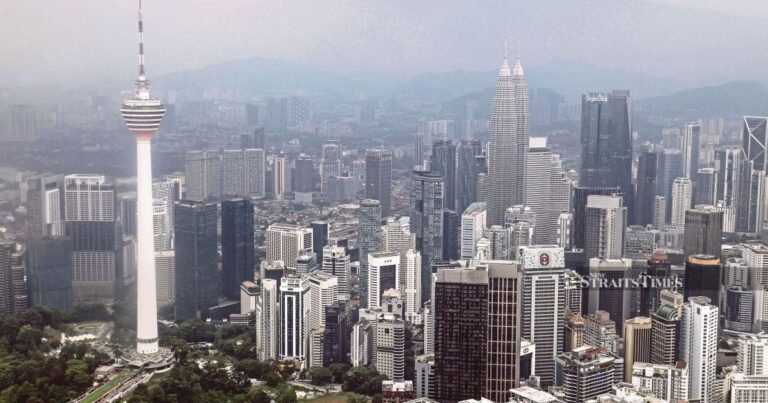Malaysia and China have reportedly entered discussions to collaborate on a rare earths processing project, according to sources cited by The Diplomat. This potential partnership signals a strategic move amid growing global demand for rare earth elements, critical components in high-tech industries and clean energy technologies. The talks underscore Malaysia’s efforts to leverage its natural resources and industrial capacity, while China continues to solidify its dominant position in the rare earths supply chain. Stakeholders across the Asia-Pacific region are closely monitoring developments, as the outcome could have significant implications for regional economic dynamics and technology sectors worldwide.
Malaysia China Engage in Strategic Discussions on Rare Earths Processing Collaboration
Malaysia and China have accelerated talks to establish a joint rare earths processing facility, signaling a strategic pivot in the Asia-Pacific’s critical minerals landscape. Industry insiders reveal that negotiations are intensely focused on aligning technological capabilities and supply chain logistics to enhance processing efficiency and environmental compliance. This collaboration is poised to bolster Malaysia’s position in the global rare earths market while enabling China to diversify its downstream processing hubs outside its borders.
Key topics under discussion include:
- Technology transfer agreements aimed at modernizing refining techniques
- Investment structures facilitating shared ownership and risk mitigation
- Regulatory frameworks ensuring adherence to international environmental standards
- Supply security strategies to stabilize rare earths availability amid global demand
An initial feasibility study has also been tabled, projecting a phased development plan that could bring the facility online within three years. Experts say this partnership not only taps into Malaysia’s abundant rare earth reserves but also reflects the shifting geopolitical priorities in critical mineral sourcing and processing.
| Aspect | Malaysia’s Role | China’s Contribution |
|---|---|---|
| Resource Supply | Provide raw rare earth ores | Advanced refining technology |
| Investment | Infrastructure development funding | Capital and equipment infusion |
| Environmental Standards | Local regulatory compliance | Best practice waste management |
| Market Access | Regional export gateway | Global distribution networks |
Assessing Economic and Environmental Implications of Malaysia China Rare Earths Project
Malaysia’s collaboration with China on the rare earths processing venture presents a complex tapestry of economic benefits and environmental challenges. Economically, the project promises to bolster local industries by creating job opportunities and attracting foreign direct investment, potentially positioning Malaysia as a strategic hub in the global rare earths supply chain. The partnership could also diversify Malaysia’s export portfolio and stimulate technological advancements in mineral processing.
However, environmental concerns loom large, particularly regarding the handling of toxic byproducts and waste management associated with rare earths extraction and refining. Local communities and environmental groups have voiced apprehensions about possible water contamination, soil degradation, and ecosystem disruption. Key factors under scrutiny include:
- Wastewater treatment protocols to prevent heavy metal leakage.
- Air quality controls to reduce particulate emissions.
- Long-term monitoring mechanisms to assess ecological impact.
| Aspect | Potential Impact | Mitigation Strategies |
|---|---|---|
| Economic Growth | Increased investments, job creation | Skill development programs, infrastructure upgrades |
| Water Quality | Risk of contamination from effluents | Advanced wastewater treatment, strict regulations |
| Air Emissions | Release of pollutants during refining | Emission control technologies, continuous monitoring |
Experts Recommend Strengthening Regulatory Frameworks to Ensure Sustainable Rare Earths Development
Industry specialists emphasize the urgent need for robust policies that not only regulate the extraction and processing of rare earth elements but also prioritize environmental protection and community welfare. With Malaysia and China eyeing collaboration on rare earths processing, experts caution that without stringent oversight, rapid development could lead to ecological degradation and social conflicts. They advocate for a comprehensive approach, incorporating transparency, ethical sourcing, and continuous monitoring to mitigate the long-term risks associated with rare earth mining.
Key recommendations to bolster sustainable practices include:
- Mandatory Environmental Impact Assessments (EIA) before project approval
- Clear guidelines on waste management and pollution control
- Community engagement programs to ensure local stakeholders are informed and involved
- Periodic audits and public disclosure of environmental compliance
| Regulatory Focus | Potential Benefits | Challenges to Address |
|---|---|---|
| Environmental Protection | Prevent pollution, conserve biodiversity | Enforcing laws in remote mining areas |
| Social Responsibility | Support local communities, reduce conflicts | Balancing economic growth and rights |
| Transparency & Reporting | Build investor & public trust | Standardizing disclosure requirements |
Insights and Conclusions
As Malaysia and China continue discussions on the rare earths processing project, the outcome could have significant implications for the regional supply chain and global market dynamics. Both nations appear poised to strengthen their strategic partnership amid growing demand for critical minerals essential to advanced technologies. Observers will be closely watching how these talks develop and what agreements emerge, potentially reshaping the Asia-Pacific’s role in the rare earths industry.




